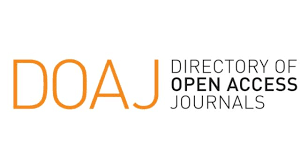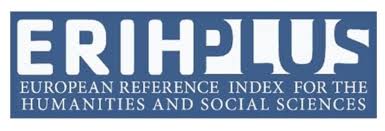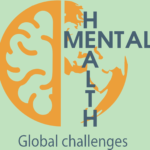The nature of the manifestation of procrastination, level of anxiety and depression in medical students in a period of altered psycho-emotional state during forced social distancing because of pandemic COVID-19 and its impact on academic performance
DOI:
https://doi.org/10.32437/mhgcj.v4i2.92Keywords:
medical students, depression, anxiety, procrastination, pandemic COVID-19, forced social distancingAbstract
Introduction: The fact that learning is moving online is probably a disappointment to most medical students. This is especially true for middle and senior students, in whom most disciplines are clinical and focus on practical work with patients. During the period of forced social distancing and online learning in connection with the COVID-19 pandemic, such a common way of learning became impossible. All these changes obviously affect the mental health of medical students, who are already at risk for such phenomenon as procrastination and disorders as anxiety and depression.
Purpose: Investigate and evaluate the level of anxiety, depression, and the nature of the manifestation of procrastination in medical students Faculty of Medicine and the Faculty of Training Foreign Citizens (FTFC) of Ivano-Frankivsk National Medical University (IFNMU) in a period of altered psycho-emotional state during the period of forced social distancing and its impact on academic performance.
Methodology: 212 medical students were interviewed. The survey was voluntary and anonymous. We used two clinical test methods to identify emotional disturbances: the Hospital Anxiety and Depression Scale (HADS) and the Montgomery-Asberg Depression Rating Scale (MADRS) (Zigmond A.S. et.al.,1983; Svanborg P., 2001). In order to assess the propensity of students to procrastinate, we also used the "Questionnaire to study the propensity of the individual to procrastination" (Shivari ,O.A., 2015), which is a modification of the "General Procrastination Scale" (Lay, C., 1986) and consists of two scales: "Personally conditioned procrastination scale" (Scale I) and "Situationally conditioned procrastination scale" (Scale II). The statistical analysis of the results was performed using STATISTICA 7.0 software packages and the package of statistical functions of Microsoft Excel.
Results and Discussion: During the testing, students note that the most important problem for them is time management. The analysis of the results survey by "Personally conditioned procrastination scale" (Scale I) "showed that 15% of the students have a low, 47.5% - medium, 37.5% - high level of personal propensity to procrastination. The analysis of the results "Situationally conditioned procrastination scale" (Scale II) showed that 25% of students have a low level of situational procrastination, 37.5% - medium and 37.5% - high, respectively. The study of the relationship between the level of propensity to procrastination (Scale I) and academic performance in medical students showed that in the group with low procrastination the success rate is higher than in groups with medium and high procrastination (r = -0.58; p <0.05). We also established a direct correlation between the Scale II indicators and the average academic performance indicators. After the survey and analysis of the results on the HADS and MADRS scales, we found a clear relationship between increased learning during the period of altered psychoemotional state and the severity of anxiety-depressive symptoms in medical students, which manifested itself in an increase in the level of anxiety and mood disorders of varying degrees.
Conclusions: Thus, procrastination that occurs in the surveyed medical students in the period of altered psycho-emotional state during forced social distancing because of pandemic COVID-19 has had "situational" situational nature. Besides, the study confirmed that the pandemic of COVID-19, as a stressful moment of the external test of identity, caused the emergence of protective mechanisms in medical students in the form of emotional and behavioral changes and disorders. The results obtained indicate the presence of adjustment disorders in the period of the altered psychoemotional state during forced social distancing because of pandemic COVID-19 in all the studied groups. Medical students also need to be made aware that depression is not a cause for shame. Future doctors should be able to maintain their mental and emotional health, as well as know, how to deal with classmates who suffer from mental illness
References
Baldassin, S., Silva, N., de Toledo Ferraz Alves, T. C., Castaldelli-Maia, J. M., Bhugra, D., Nogueira-Martins, M. C., de Andrade, A. G., & Nogueira-Martins, L. A. (2013). Depression in medical students: cluster symptoms and management. Journal of affective disorders, 150(1), 110–114. https://doi.org/10.1016/j.jad.2012.11.050
Fleischmann, A., Arensman, E., Berman, A., Carli, V., De Leo, D., Hadlaczky, G.,Saxena, S. (2016). Overview evidence on interventions for population suicide with an eye to identifying best-supported strategies for LMICs. Global Mental Health, 3, E5. doi:10.1017/gmh.2015.27
Institute for Health Metrics and Evaluation (IHME) (2018). Findings from the Global Burden of Disease Study 2017 [text] / Seattle, WA: IHME.25 S.
Pereira-Lima, K., Mata, D. A., Loureiro, S. R., Crippa, J. A., Bolsoni, L. M., & Sen, S. (2019). Association Between Physician Depressive Symptoms and Medical Errors: A Systematic Review and Meta-analysis. JAMA network open, 2(11), e1916097. https://doi.org/10.1001/jamanetworkopen.2019.16097
Pereira-Lima, K., Mata, D. A., Loureiro, S. R., Crippa, J. A., Bolsoni, L. M., & Sen, S. (2019). Association Between Physician Depressive Symptoms and Medical Errors: A Systematic Review and Meta-analysis. JAMA network open, 2(11), e1916097. https://doi.org/10.1001/jamanetworkopen.2019.16097
Preventing suicide: a global imperative. [text] (2014) / Geneva: World Health Organization.97 S.
Rotenstein, L. S., Ramos, M. A., Torre, M., Segal, J. B., Peluso, M. J., Guille, C., Sen, S., & Mata, D. A. (2016). Prevalence of Depression, Depressive Symptoms, and Suicidal Ideation Among Medical Students: A Systematic Review and Meta-Analysis. JAMA, 316(21), 2214–2236. https://doi.org/10.1001/jama.2016.17324
Tichenor, M., & Sridhar, D. (2019). Metric partnerships: global burden of disease estimates within the World Bank, the World Health Organisation and the Institute for Health Metrics and Evaluation. Wellcome open research, 4, 35.https://doi.org/10.12688/wellcomeopenres.15011.2
Zigmond A.S., Snaith RP. The hospital anxiety and depression scale [text] /A.S. Zigmond, R.P Snaith //Acta Psychiatr Scand.– 1983.– 67(6).– S.361–70









 E-mail us: viktor.vus@mhgcj.org
E-mail us: viktor.vus@mhgcj.org 